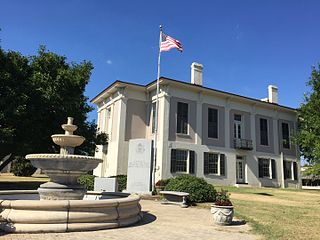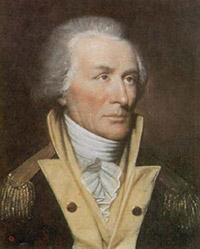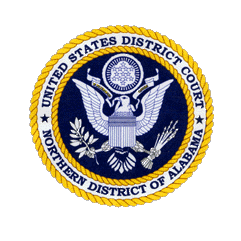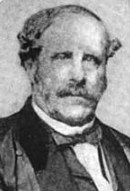
Greene County is a county located in the west central portion of the U.S. state of Alabama. As of the 2020 census, the population was 7,730, the least populous county in Alabama. Its county seat is Eutaw. It was named in honor of Revolutionary War General Nathanael Greene of Rhode Island.

Sumter County is a county located in the west central portion of Alabama. At the 2020 census, the population was 12,345. Its county seat is Livingston. Its name is in honor of General Thomas Sumter of South Carolina.

Sumter County is a county located in the U.S. state of South Carolina. As of the 2020 census, the population was 105,556. In a 2018 census estimate, the population was 106,512. Its county seat is Sumter.

Livingston is a city in and the county seat of Sumter County, Alabama, United States and the home of the University of West Alabama. By an act of the state legislature, it was incorporated on January 10, 1835. At the 2010 census the population was 3,485, up from 3,297 in 2000. It was named in honor of Edward Livingston, of the Livingston family of New York.

Sumter is a city in and the county seat of Sumter County, South Carolina, United States. Known as the Sumter Metropolitan Statistical Area, the namesake county adjoins Clarendon and Lee to form the core of Sumter-Lee-Clarendon Tri-county area of South Carolina that includes three counties straddling the border of the Sandhills, Pee Dee, and Lowcountry regions. The population was 43,463 at the 2020 census.

Raphael Semmes was an officer in the Confederate Navy during the American Civil War. Until then, he had been a serving officer in the US Navy from 1826 to 1860.

Thomas Sumter was a soldier in the Colony of Virginia militia; a brigadier general in the South Carolina militia during the American Revolution, a planter, and a politician. After the United States gained independence, he was elected to the United States House of Representatives and to the United States Senate, where he served from 1801 to 1810, when he retired. Sumter was nicknamed the "Fighting Gamecock" for his fierce fighting style against British soldiers after they burned down his house during the Revolution.

John Gayle was the 7th Governor of Alabama, a United States representative from Alabama, a justice of the Supreme Court of Alabama and a United States district judge of the United States District Court for the Middle District of Alabama, the United States District Court for the Northern District of Alabama and the United States District Court for the Southern District of Alabama.

The United States District Court for the Northern District of Alabama is a federal court in the Eleventh Circuit.
Intercourse is an unincorporated community located at a crossroads in Sumter County, Alabama, United States. A post office called Intercourse was established in 1840, and remained in operation until it was discontinued in 1913. It is named for the traffic intersection of the town's crossroads. Although a share of the residents want the unusual name changed to Siloam, state maps still identify the place as Intercourse.

Franklin J. Moses Sr. was an attorney, planter, politician and judge in South Carolina. He served as a state senator from 1841 to 1866, when he was elected to the circuit court. He was elected as Chief Justice of the State Supreme Court in 1868 during the Reconstruction era. In 1876 he was asked to rule on a challenge to election returns in the hotly disputed gubernatorial campaign, eventually won by Democrat Wade Hampton and ending Republican domination in the state.
The Battle of Dingle's Mill was an American Civil War battle that took place near Sumterville, Sumter County, South Carolina.

Sumterville is an unincorporated community in the U.S. state of Florida within Central Sumter County. Like the county in which it resides, Sumterville was named after General Thomas Sumter, a hero of the American Revolutionary War. The community was an early county seat of Sumter County. The ZIP code for this community is 33585.
Wahoo is an unincorporated community in Sumter County, Florida, United States. First settled by the Timucua, the area was eventually settled by the Seminoles. During the Second Seminole War, Wahoo and the surrounding area served as shelter to the Seminoles and as the site of several skirmishes. After the war, white settlers migrated to the area and established a thriving town.
Warsaw, also known as Jamestown, is an unincorporated community in Sumter County, Alabama, United States.

The 1940 United States presidential election in South Carolina took place on November 5, 1940. All contemporary 48 states were part of the 1940 United States presidential election. State voters chose 8 electors to the Electoral College, which selected the president and vice president.
Barrytown, also known as Barryton or Mosely Store, is an unincorporated community in Choctaw County, Alabama, United States.
Patton was an unincorporated community in Walker County, in the U.S. state of Alabama. "Patton" and "Patton Junction" are often treated as different names for a single community.
Coatopa is an unincorporated community in Sumter County, Alabama, United States.
Belmont, also spelled Belmonte, is an unincorporated community in Sumter County, Alabama, United States.












